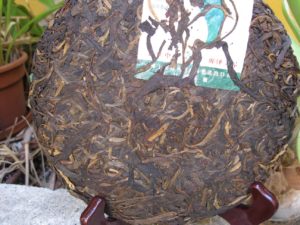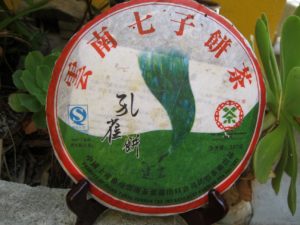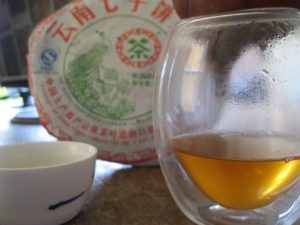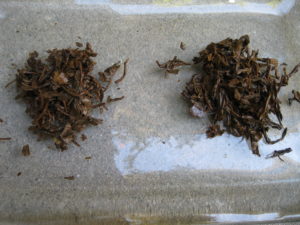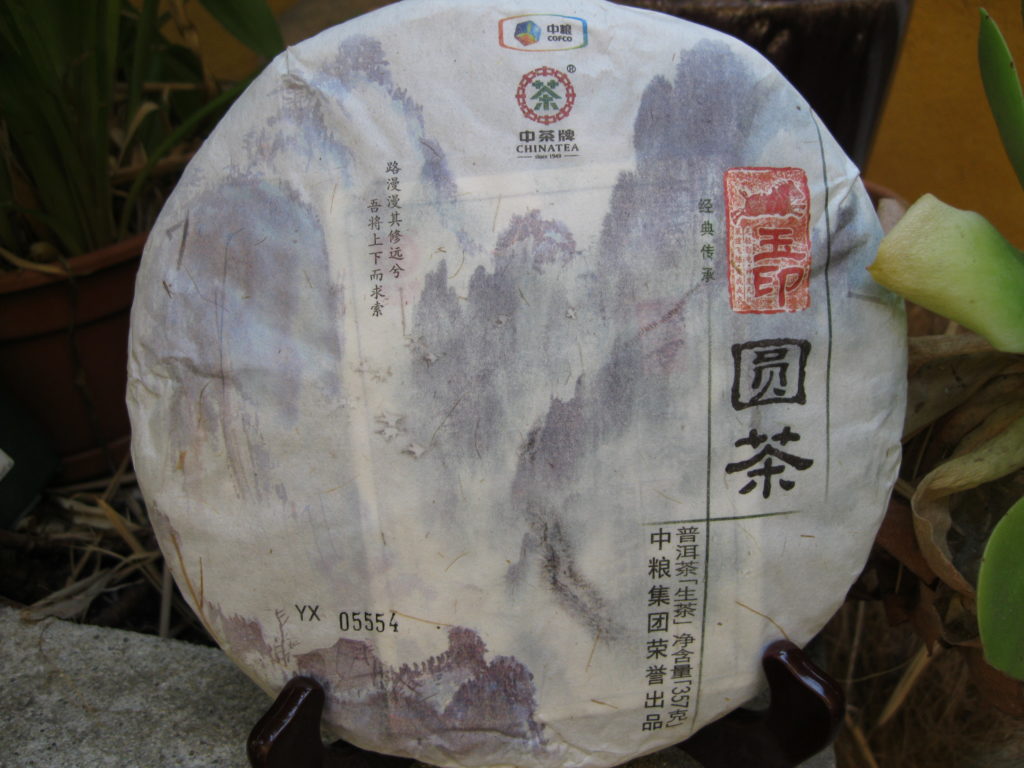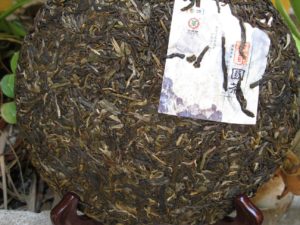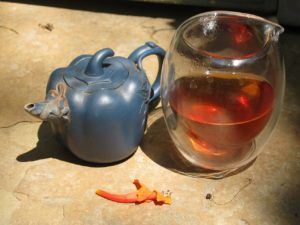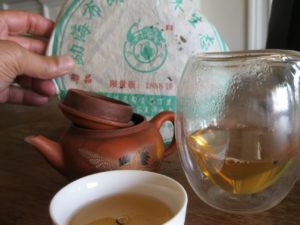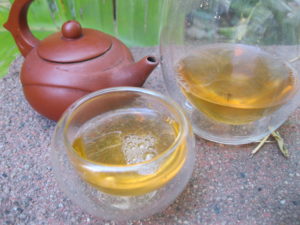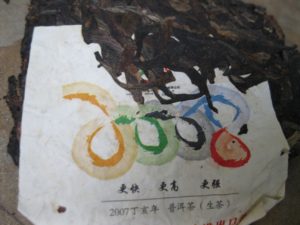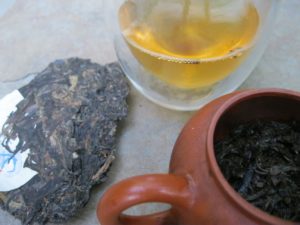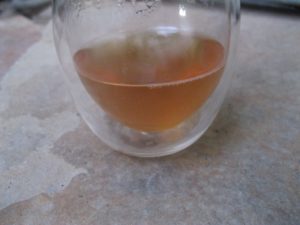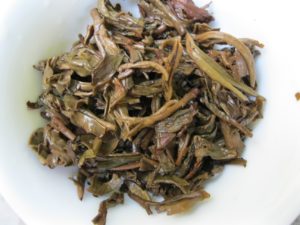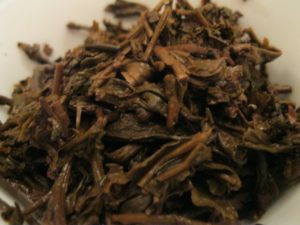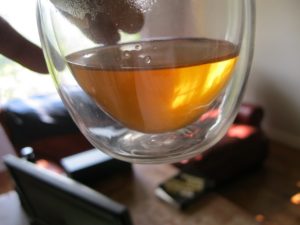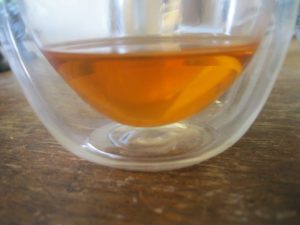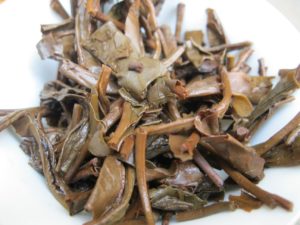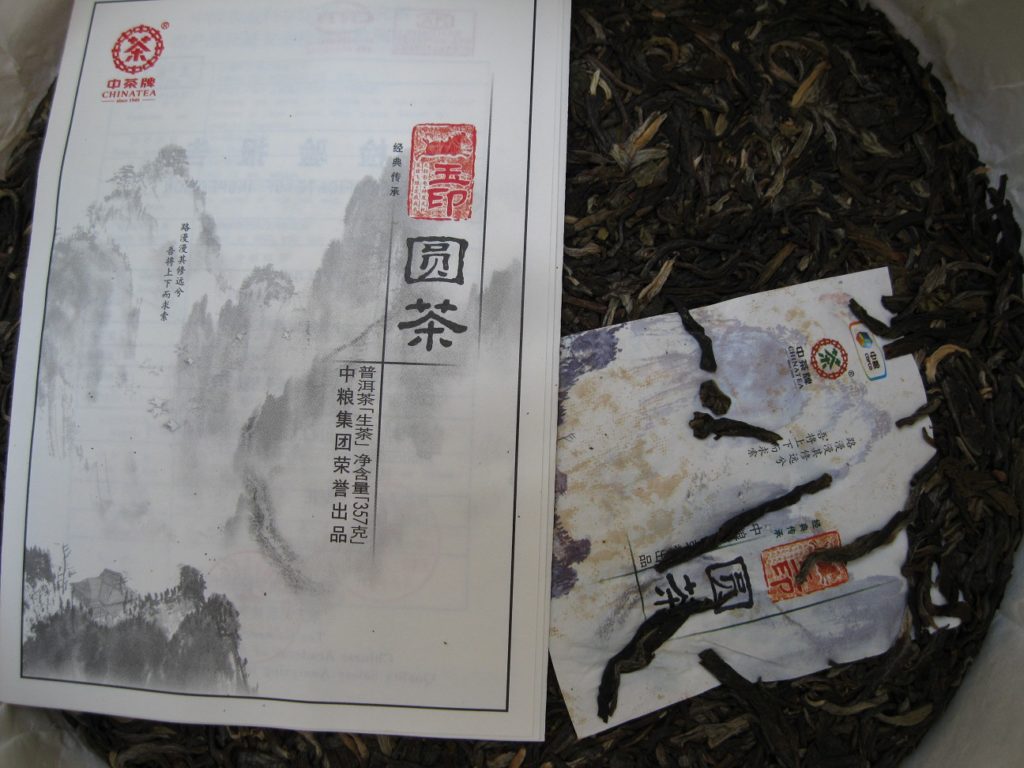Two Puerh Peacocks from ’07
These two puerh peacocks couldn’t be more different from one another. The ’07 Bada is complex, minerally, medicinal, sweet, and floral. The ’07 Peacock is pure Zen, thick and wheatie with almost no taste.
Both brew to a rich golden hue. The leaves of Peacock are considerably larger. It also has more froth than the Bada, but to call it frothy would be an overstatement. Astride a slight sweetness is a pinch of bitterness, quite similar to Sweet-n-low. Overall, it possesses a character similar to a roasted barley tea, only thicker and sweeter.
The Bada is in company with some older spring teas in the Junky’s collection, such as the ’05 Peacock Puerh, LM, ’06 Gold Ribbon Tuo, XG and the ’05 Yiwu, YPH. However, the Bada’s taste is altogether more complex. There’s some mild camphor and sweet cinnamon notes. The aged floral huigan is noteworthy and lingers. You can smell the cinnamon too.
Pushing the Bada in later infusions only makes the brew thicker. It never bottoms out, as signified by a bitter-metalic taste. The spice notes gain prominence the further one advances in the session.
It is not possible to say that one production stands head-and-shoulders over the other. They’re not comparable, because they fall into different classes. The Peacock is in the Zen class. As far as some similar Zhongcha productions, like the Blue Mark, it is even better tasting and a superior value, a diamond in the rough. The Bada falls into a category that I might most associate with the ’08 Gift Puerh, from Xiaguan, at least as far as some of the mineral notes are concerned, but as noted above old flowers and spice figures prominently. It is quite in a class of it’s own.

